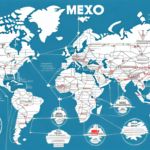Comparing Shipping Rates: USPS, UPS, and FedEx International
Shipping products internationally is essential for many businesses looking to expand their reach and grow their customer base. However, choosing the right carrier for your international shipping requirements can be a daunting task. With numerous options available, it can be challenging to determine which carrier offers the best rates, timeframes, and services. In this article, we will compare the shipping rates of three of the world's leading carriers: USPS, UPS, and FedEx International.
Introduction to International Shipping
International shipping involves moving goods or products from one country to another. It requires coordination between multiple parties, including shippers, carriers, customs officials, and government agencies. International shipping is often more complex than domestic shipping, and selecting a carrier with the expertise and experience to navigate the complexities of international logistics is crucial.
Challenges in International Shipping
One of the biggest challenges in international shipping is dealing with customs regulations. Each country has its own set of rules and regulations that must be followed, and failure to comply can result in delays, fines, or even seizure of the goods. It is important to work with a carrier that has a thorough understanding of these regulations and can ensure that all necessary paperwork and documentation is in order.
According to the World Bank, efficient customs procedures are critical for reducing trade barriers and facilitating smoother international transactions.
Benefits of International Shipping
International shipping offers numerous benefits, including increased revenue opportunities, access to new markets, and the ability to diversify your customer base. Shipping internationally can also help businesses reduce costs by taking advantage of lower production or material costs in other countries and streamlining their supply chain.
Business Expansion and Brand Recognition
In addition to financial benefits, international shipping can help businesses establish a global presence and build brand recognition. By shipping products to different countries, businesses can increase their visibility and reach a wider audience. This can lead to increased brand awareness and customer loyalty, as well as potential partnerships and collaborations with international companies.
Advantages and Disadvantages of USPS, UPS, and FedEx International
Each carrier offers unique advantages and disadvantages, depending on your specific shipping requirements:
- USPS offers a variety of shipping options, including Priority Mail Express International and Global Express Guaranteed, with average delivery times of one to three business days.
- UPS has a well-established logistics network and offers same-day delivery options.
- FedEx is known for its extensive international coverage, serving over 220 countries and territories.
Cost Considerations
While USPS may not offer guaranteed delivery times for all international options, making it suitable for businesses with flexible timelines, UPS and FedEx can be more expensive but offer faster and more reliable services for time-sensitive shipments.
Customer Support
USPS is reputed for excellent customer service, with knowledgeable representatives available to assist with any questions or concerns. UPS and FedEx also offer robust customer support, though their services may not be as comprehensive as those of USPS.
Understanding the Shipping Services Offered by USPS, UPS, and FedEx International
It's essential to understand the shipping services offered by each carrier before making a decision:
- USPS offers Priority Mail International, First-Class Mail International, and Priority Mail Express International.
- UPS provides services such as UPS Worldwide Express, UPS Worldwide Saver, and UPS Worldwide Expedited.
- FedEx offers FedEx International Priority, FedEx International First, and FedEx International Economy.
Delivery Time and Cost
When choosing a shipping service, consider both delivery time and cost:
- USPS Priority Mail International: Cost-effective for packages up to 70 pounds, with delivery times ranging from 6 to 10 business days.
- UPS Worldwide Express: Offers guaranteed delivery within 1-3 business days at a higher cost.
- FedEx International Priority: Suitable for urgent shipments, with delivery times ranging from 1 to 3 business days.
Customs Regulations
Each carrier handles customs regulations differently. USPS provides an online tool to check customs regulations for each country, while UPS and FedEx offer assistance through their customer service teams to ensure compliance and avoid delays.
Factors that Affect Shipping Rates
Several factors influence the shipping rates offered by each carrier:
- Package Weight and Size: Heavier and larger packages typically incur higher shipping costs.
- Destination Country: Shipping to remote or less accessible countries may be more expensive.
- Shipping Speed: Faster delivery options generally cost more.
- Additional Services: Features like tracking, insurance, and signature confirmation can add to the cost.
Type of Product
The nature of the product being shipped also affects rates. Fragile or hazardous items may incur additional fees due to the extra care required during handling and transportation.
Seasonal Demand
Shipping rates can fluctuate based on the time of year. During peak holiday seasons, carriers may experience higher demand, leading to increased costs. Planning and booking shipments in advance can help mitigate these price increases.
Comparison of Shipping Rates for Different Package Sizes and Weights
To compare the shipping rates of USPS, UPS, and FedEx International, consider the following examples:
- 1-Pound Package to Japan:
- USPS Priority Mail International: $36.35
- UPS Worldwide Expedited: $53.20
- FedEx International Economy: $62.63
- 5-Pound Package to Italy:
- USPS Priority Mail International: $93.50
- UPS Worldwide Saver: $145.42
- FedEx International Economy: $133.15
- 10-Pound Package to Australia:
- USPS Priority Mail International: $139.00
- UPS Worldwide Saver: $225.78
- FedEx International Economy: $238.05
These rates are subject to change and may vary depending on the specific destination and shipping method chosen. Additionally, carriers may offer additional services such as insurance or package tracking for an extra fee.
When comparing shipping rates, also consider estimated delivery times and any restrictions or regulations that may apply, such as customs fees or prohibited items. By evaluating these factors, you can make an informed decision about which carrier and shipping method best meet your needs.
Comparison of Shipping Timeframes for Different Destinations
The shipping timeframes offered by each carrier vary based on the destination country and chosen shipping speed:
- USPS: Typically offers delivery times of one to three business days for Priority Mail Express International and Global Express Guaranteed services.
- UPS and FedEx: Provide a range of delivery options, including same-day and next-day delivery in some cases.
Delivery times can be affected by factors such as customs clearance, weather conditions, and unforeseen circumstances. It's recommended to track your shipment and communicate with the carrier if you have any concerns about the delivery timeframe.
Additionally, consider the cost of shipping in relation to delivery speed. Faster shipping options may come with higher fees, so balancing cost and delivery time is essential.
Comparison of Additional Fees and Charges for Each Carrier
Understanding additional fees and charges is vital when selecting a carrier, as these can significantly impact the overall cost of your shipment:
- Customs and Duties: USPS charges a handling fee for shipments requiring customs clearance, while UPS and FedEx offer free customs clearance services for their premium shipping options.
- Additional Services: Fees may apply for services such as signature confirmation, Saturday delivery, and oversized packages. These fees vary between carriers, so it's important to compare them when selecting a shipping option.
- Discounts and Waivers: Some carriers may offer discounts or waived fees for certain types of shipments, such as non-profit organizations or military personnel. Be sure to check with your chosen carrier to see if you qualify for any special rates or discounts.
Tips for Choosing the Best Carrier for Your Business Needs
When selecting a carrier for your international shipping requirements, consider the following factors:
- Budget: Determine your budget and compare the costs of different carriers to find the most cost-effective option that meets your needs.
- Destination: Consider the destination country’s logistics, customs regulations, and the carrier’s network in that region.
- Package Size and Weight: Ensure the carrier can accommodate the size and weight of your packages.
- Additional Services: Identify any additional services you require, such as tracking, insurance, or expedited shipping.
- Carrier Reputation: Evaluate the reputation and reliability of each carrier, including their customer service and support.
Delivery Reliability and Tracking
Choose carriers that offer reliable delivery and robust tracking options to ensure your packages arrive on time and in good condition.
Environmental Impact
Consider the environmental impact of your shipping choices. Look for carriers that have implemented sustainable practices and offer eco-friendly options, such as carbon-neutral shipping or the use of electric vehicles.
Case Studies: Real-life Examples of Choosing the Right Carrier for Different Business Needs
Here are some real-life examples of businesses that have chosen the right carrier for their international shipping requirements:
- Small Online Retailer in the USA: Needed to ship a 2-pound package to Canada. Chose USPS' First-Class Mail International service for its reliable delivery times and cost-effectiveness.
- Large Manufacturing Company in China: Required to ship a large shipment of materials to the USA quickly. Selected UPS' Worldwide Express service for its guaranteed delivery times and comprehensive tracking.
Conclusion: Making an Informed Decision When Choosing a Carrier for Your International Shipping Requirements
Choosing the right carrier for your international shipping requirements can significantly impact your business's success. By understanding the advantages and disadvantages of each carrier, exploring the shipping services offered, and considering factors such as shipping rates, timeframes, and additional fees, you can make an informed decision that aligns with your specific needs.
Evaluate your business priorities, budget, and customer expectations to select a carrier that not only meets your logistical requirements but also supports the growth and reputation of your business on a global scale.






















